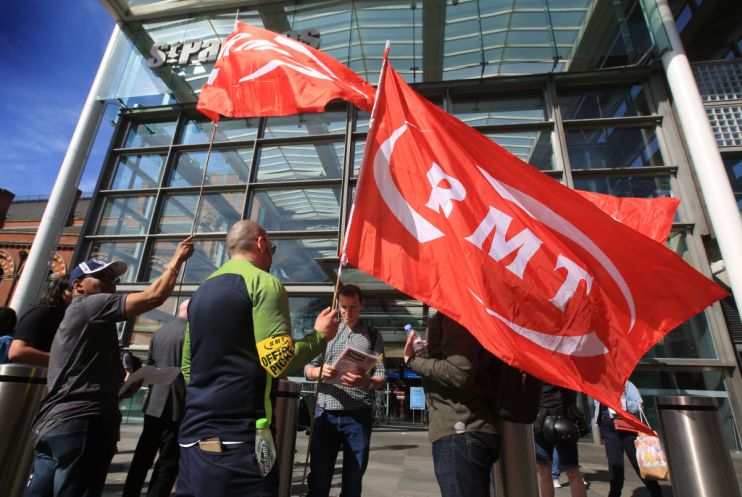A summer of discontent is the unions’ fight for power in the modern workforce

This week, London was awash with bikes and e-scooters as the biggest rail strikes in thirty years kicked off on Tuesday. Other unions were watching closely as they plan for their own industrial action. Some are calling it the summer of discontent, as a waterfall of job losses and long hours stir up a storm and inflation pushes up prices.
RMT, long cast as the most militant of the unions, has demanded a 7 per cent pay rise, while Network Rail, the employer, is ready to offer 3 or 4 per cent in return for modernisation. For Mick Lynch, RMT leader, modernisation is a synonym for job cuts.
At the same time, the government has reinstated a pensions triple-lock, which will push pensions and benefits up with inflation, all the while insisting that widespread pay rises would be the making of a wage-price spiral.
Thousands of trains were cancelled and commuters and businesses bore the brunt of the strikes. But, somehow, public support for the strikes has not collapsed as many predicted. Lynch, an outspoken and unceremonious leader, has said more strikes could be on the way if demands aren’t met.
Those at the Royal College of Nursing (RCN) are keeping an eye on Lynch. They’re looking at the negotiations for proof that strikes, after all, still work.
In 1979, there were more than 13 million trade union members – 53 per cent of the workforce. In 2020, there was less than half of that with 6 million members – a mere 23.7 per cent of the workers. Of those, 75 per cent were over the age of 35. The role of the unions in the modern era is under threat and, for some, they are leading a strike against irrelevance as much as they are striking against pay. They are striking to remind people they still hold sway.
The lack of support from Labour leader Sir Keir Starmer is evidence of the waning power of workers groups, even though a handful of MPs turn up to picket lines.“It wouldn’t be the first time that the Labour Party leadership has effectively boycotted picket lines in order to appear ‘neutral’”, says Ben Sellers, Director of the Institute of Employment Rights.
The decision over whether to increase the NHS pay award is eleven weeks late, infuriating the RCN, who earlier this year launched a campaign to pay nurses 5 per cent above inflation. That would put pay rises in double digits. They, like other unions, emboldened by the coverage of the rail strikes, stand ready to call for a ballot.
From their desks and classrooms, teachers are watching too. “The government wrongly assumed teachers would simply stand by as they erode pay and strip our education system to the bone”, said Dr Patrick Roach, the NASUWT General Secretary. He’s ready to ask members of its union whether they’re ready to take industrial action. The National Education Union is also looking for double figures. For them, it’s a 12 per cent salary bump or a ballot of members in November.
Criminal barristers will strike next week, and the Communication Workers’ Union has said they will ballot Royal Mail staff over industrial action. Even the union behind Uber drivers and other couriers has piled in.
Transport Secretary Grant Shapps has managed to extrapolate himself from negotiations between RMT and Network Rail. But what will Health Secretary Sajid Javid say when the NHS faces even longer waitlists if nurses walk out on their posts?
The UK has not been plagued by widespread industrial action of this kind in decades. Universities are used to occasional disruption from striking academics, there have been sporadic tube strikes. But nothing on this scale.
“We’re not used to highly disruptive strikes anymore, they’re relatively uncommon”, says Alex Bryson, Professor of Quantitative Social Science at UCL. Bryson points to France, a country with a syndicalist history where people are very accustomed to invasive strikes. In the UK, on the other hand, when people talk about strikes, they mostly refer to the 1970s and 1980s. We might mention the junior doctors and nurses’ strikes of recent years, but they don’t amount to the level of disruption we talk about when we say “the 70s”.